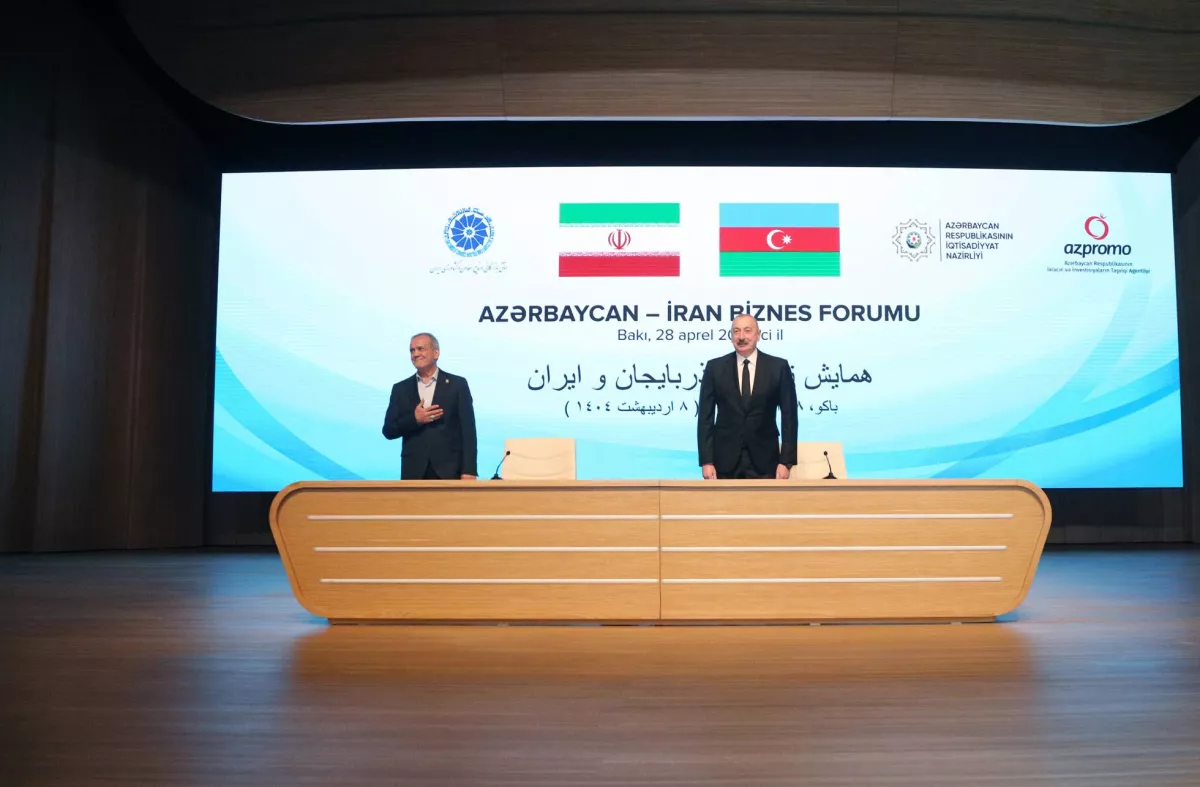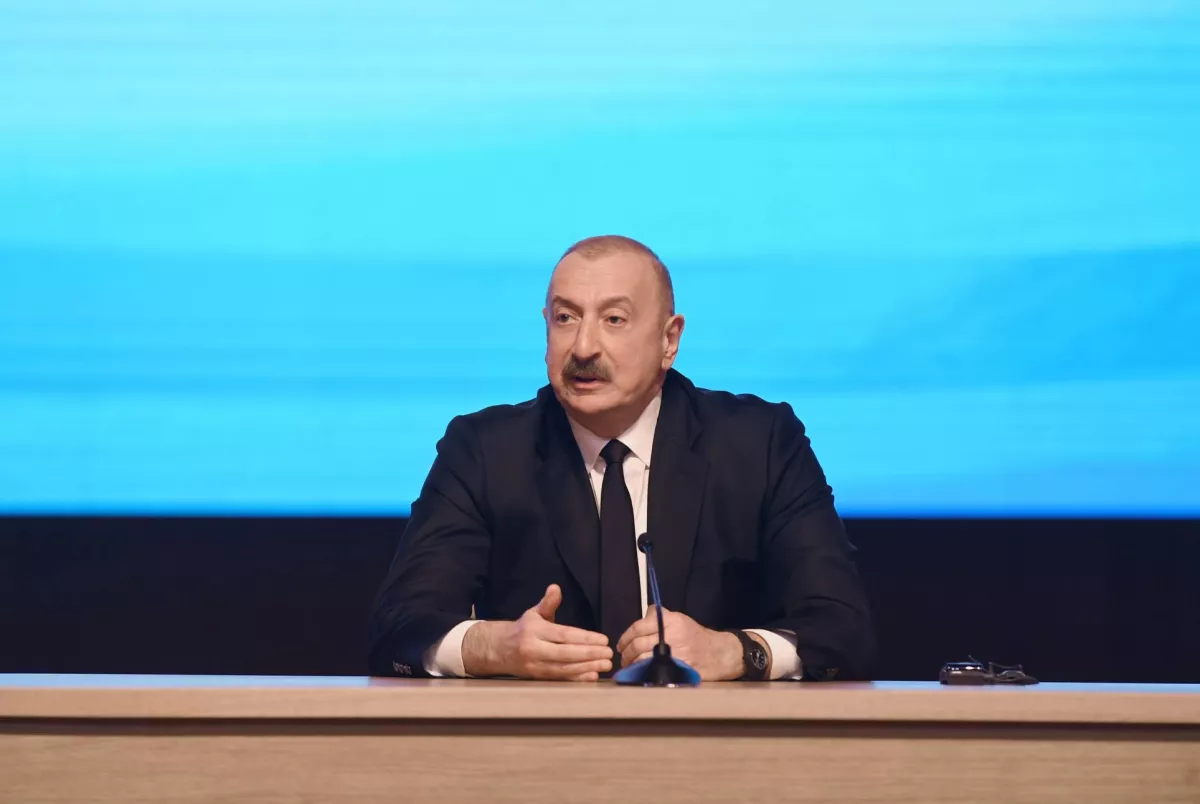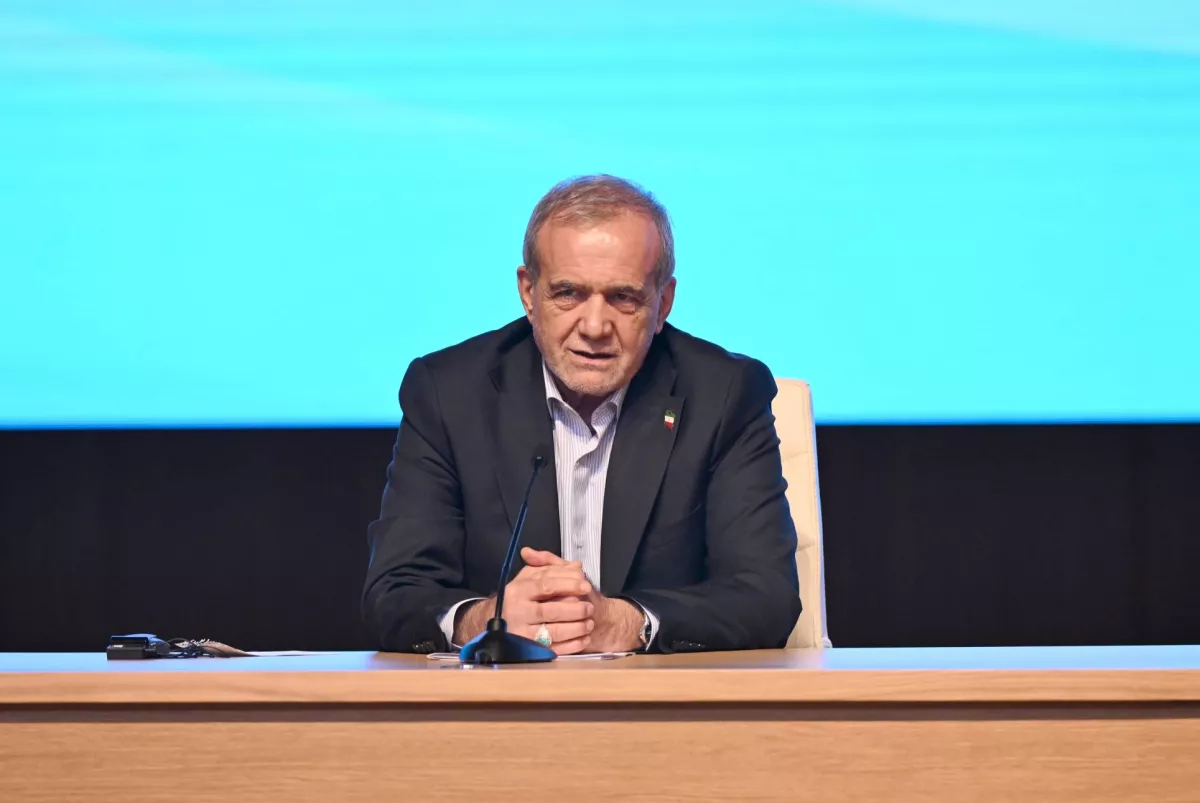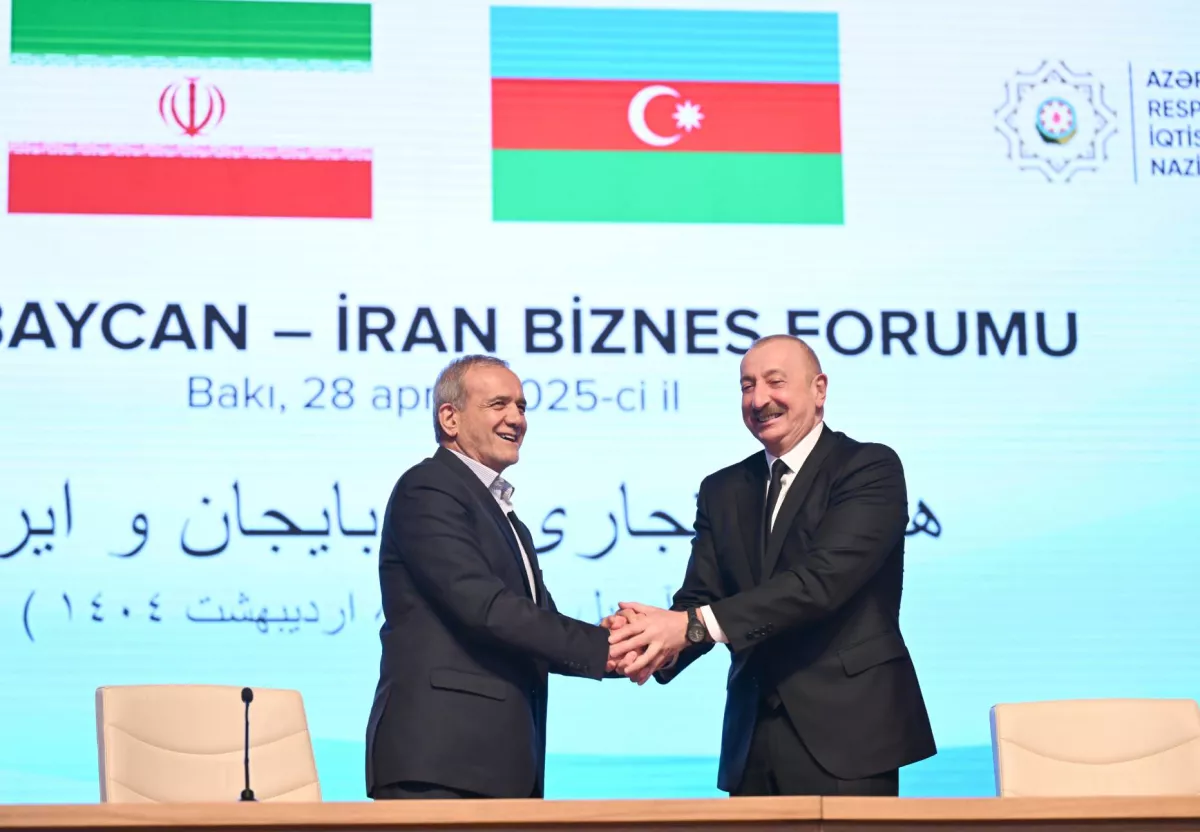Transport, trade and energy: Baku and Tehran strengthen ties Presidents Aliyev and Pezeshkian highlight future cooperation
Economic relations between Azerbaijan and Iran have recently gained a renewed opportunity to overcome inertia and advance to a qualitatively new level of development. Meetings on the sidelines of regional summits and reciprocal visits by the heads of relevant ministries have helped drive forward capital-intensive projects in transport, energy, and other sectors. A key development that accelerated the implementation of these initiatives was the official visit to Azerbaijan by the President of the Islamic Republic of Iran (IRI), Masoud Pezeshkian. The talks held in Baku and the accompanying business forum demonstrated the two sides' commitment to expanding trade, economic, investment, and infrastructure cooperation.
Over the past decade, Azerbaijani-Iranian business relations have experienced both periods of growth and decline, influenced by international crises and sanctions. During the relatively stable years of 2018–2019, joint initiatives were launched in the automotive industry, agriculture, cross-border trade, and other sectors. In the post-pandemic period—particularly following the liberation of the Karabakh region—Baku and Tehran have focused their priorities on the development of a transit road and railway corridor. A gas swap deal involving Turkmen supplies was implemented, while the planning and coordination of cross-border energy exchange projects also gained momentum.

Speaking at the joint business forum in Baku, President of Azerbaijan Ilham Aliyev expressed confidence that the agreements reached during the Iranian president’s visit—including the signed documents and the joint presidential statement—would contribute significantly to advancing cooperation in trade, investment, and other sectors in the coming years.
“There are more than 400 participants in the business forum. This shows that mutual interest is quite high. Of course, when political relations are strong, business circles also structure their activities accordingly, and I do believe that tangible steps should be taken to increase trade in the coming years,” President Aliyev noted. “Today, when we look at statistical figures, we see that trade between our two countries does not reach a single billion dollars, and of course, we can’t be pleased with that. Therefore, increasing trade and mutual investment, creating joint ventures, and other similar initiatives will certainly be commendable.”
The head of state stressed the importance of continuing efforts to bring together entrepreneurs from both countries. He noted that businesspeople must be presented with clear information on specific projects, the tax system, tariffs, the investment climate, and business legislation of both Azerbaijan and Iran—elements that must be fully understood by potential investors. In this regard, President Aliyev highlighted the vital role of the Azerbaijani-Iranian intergovernmental commission, which oversees planning and swiftly addresses current business agenda issues.

Special attention during the presidential talks was devoted to expanding transport and logistics cooperation between Iran and Azerbaijan.
“Azerbaijan and Iran, as countries located at the crossroads of transport routes, can implement the key transport corridors and routes between us – the North-South and East-West transport routes between us and Russia,” said Iranian President Masoud Pezeshkian. “This creates the necessary conditions for the development of trade, science, experience, and technology […] We are situated in such a geographical location that we can establish these connections. Such work naturally requires highways, railways, ports, trade relations, as well as borders we can cross.”

President of Azerbaijan Ilham Aliyev also emphasised the importance of both countries' participation in the International North–South Transport Corridor (INSTC), which promotes the expansion of international transit and the sustainable development of Azerbaijani-Iranian transport and trade links. “We want this to be not just a transport corridor, but to create opportunities for opening new businesses and creating new industrial enterprises along the way, both in Azerbaijan and Iran,” he noted.
It is worth recalling that following the signing of an agreement on 17 May 2023 between the transport ministries of Russia and Iran on joint financing, design, and construction of the 170-kilometre Rasht–Astara railway segment—estimated at around €1.6 billion—the INSTC project has entered its final phase. In Iran, land clearance has already begun, and preparations for laying the railway track are underway, with construction expected to be completed by the end of 2028.
On the Azerbaijani side, since 2018, work has been ongoing to eliminate bottlenecks along the corridor. Azerbaijan Railways CJSC has laid tracks from the border town of Astara directly to the state border, constructed a railway bridge, and commissioned new terminals and border checkpoints. Notably, the region's largest grain terminal—Astara Grain Terminal—was built, with an annual capacity of 500,000 tonnes. Azerbaijan Railways also initiated the construction of the Astara Universal Terminal in Iran, whose throughput capacity is expected to soon reach 4 million tonnes per year.
Another major Azerbaijani-Iranian transport project is set to be implemented within the framework of Azerbaijan’s proposed initiative—the creation of the "Araz Corridor." As President Ilham Aliyev noted, this new transport route will connect the main part of Azerbaijan with the Nakhchivan Autonomous Republic (NAR) via Iranian territory.
To recall, on 11 March 2022, the governments of Azerbaijan and Iran signed a Memorandum of Understanding on the establishment of new communication links between Azerbaijan’s East Zangezur Economic Region and NAR through Iranian territory. The project includes the construction of a 55-kilometre highway and a parallel railway line from Imishli (Azerbaijan) to Parsabad (Iran), featuring four border bridges over the Araz River, with the road and rail networks eventually linking directly to Nakhchivan.
Over the past few years, Azerbaijan has independently funded the construction of infrastructure for the transboundary international railway line from Horadiz to Aghband, with about two-thirds of the 110.4-kilometre single-track segment already completed. A parallel motorway is also being built along the same route, with the majority of the work already finished.
“The construction of a bridge over the Araz River on the Azerbaijani side is almost complete, including the construction of the border checkpoint,” President Ilham Aliyev stated. “If everything goes to plan, the highway bridge can be put into operation by the end of this year.”
The head of state emphasised that these projects are not intended solely for the benefit of the immediate region—they are meant to become a branch of a broader transport corridor stretching from Asia to Europe, reaching the Mediterranean Sea on one end and the Persian Gulf on the other. Many countries stand to benefit from this initiative, he noted, underlining that the leading role in its implementation remains with Azerbaijan and Iran. He also added that Azerbaijan’s part in the project is essentially complete.

At the business forum, attention was also given to cooperation in the field of electricity generation, including the construction of power plants and transmission lines. “In the future, we can also consider energy exchange projects between the two countries in both bilateral and multilateral formats – together with neighbouring countries. More precisely, this is already one of the issues on the agenda today,” President Ilham Aliyev emphasised.
Notably, the joint efforts of Baku and Tehran in the development of renewable energy sources (RES) have proven effective, particularly with the construction of the Khudafarin and Giz Galasi hydroelectric power plants on the border of the Araz River.
“The process of producing green energy in Azerbaijan has already begun, and it has a great future. In five years, we will unlock our solar, wind, and hydropower potential of 6,500 megawatts, and most of this is export-oriented energy,” President Aliyev stated, reiterating that regional energy exchange projects are becoming increasingly relevant.
Following the official visit, the Presidents of Iran and Azerbaijan, along with the heads of several ministries and agencies, signed a series of memoranda and other documents. Among them, particular attention should be given to the “Memorandum of Understanding between the Ministry of Digital Development and Transport of the Republic of Azerbaijan and the Ministry of Roads and Urban Development of the Islamic Republic of Iran on Comprehensive Cooperation in the Field of Transport for 2025-2026.”








